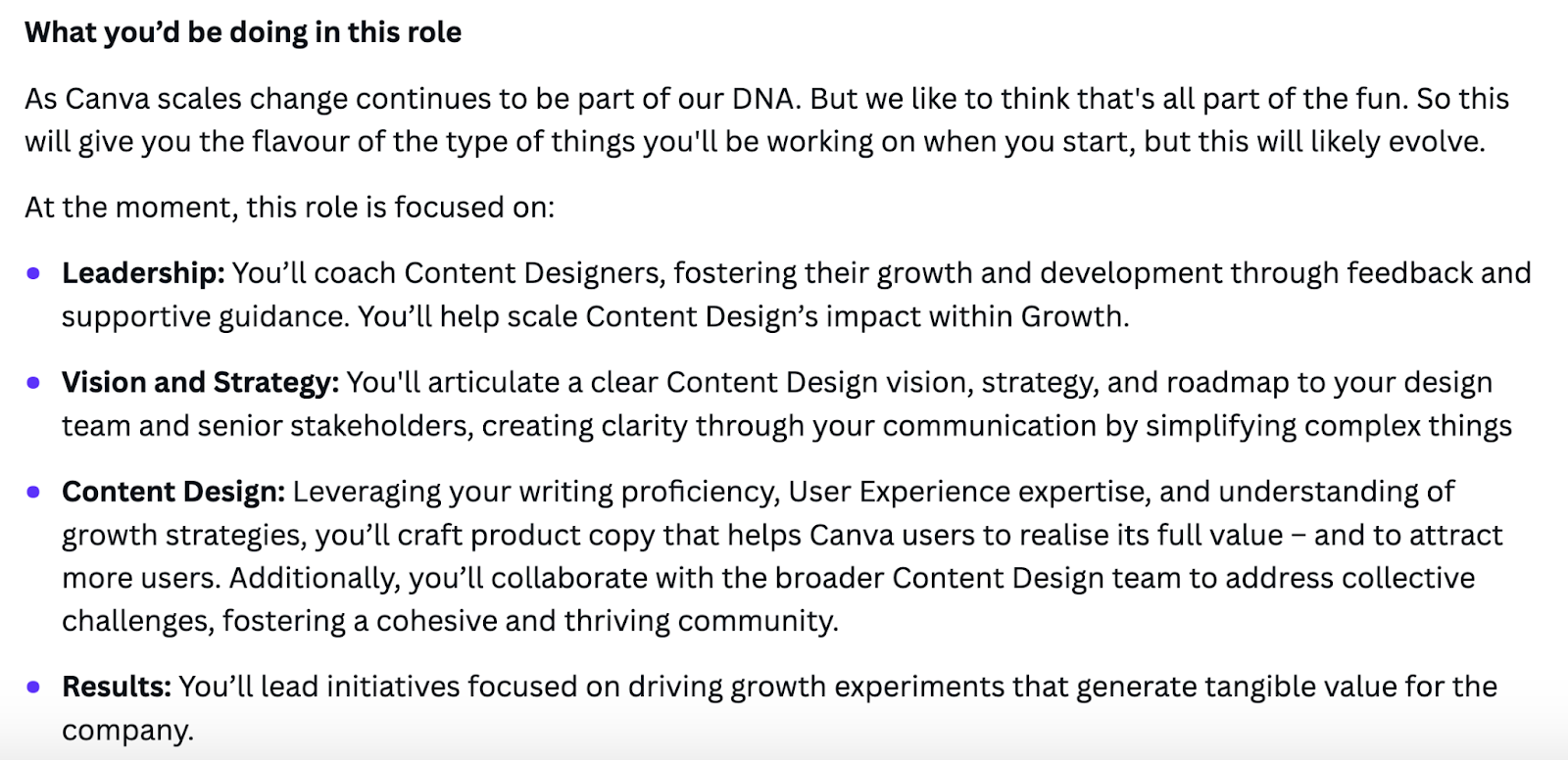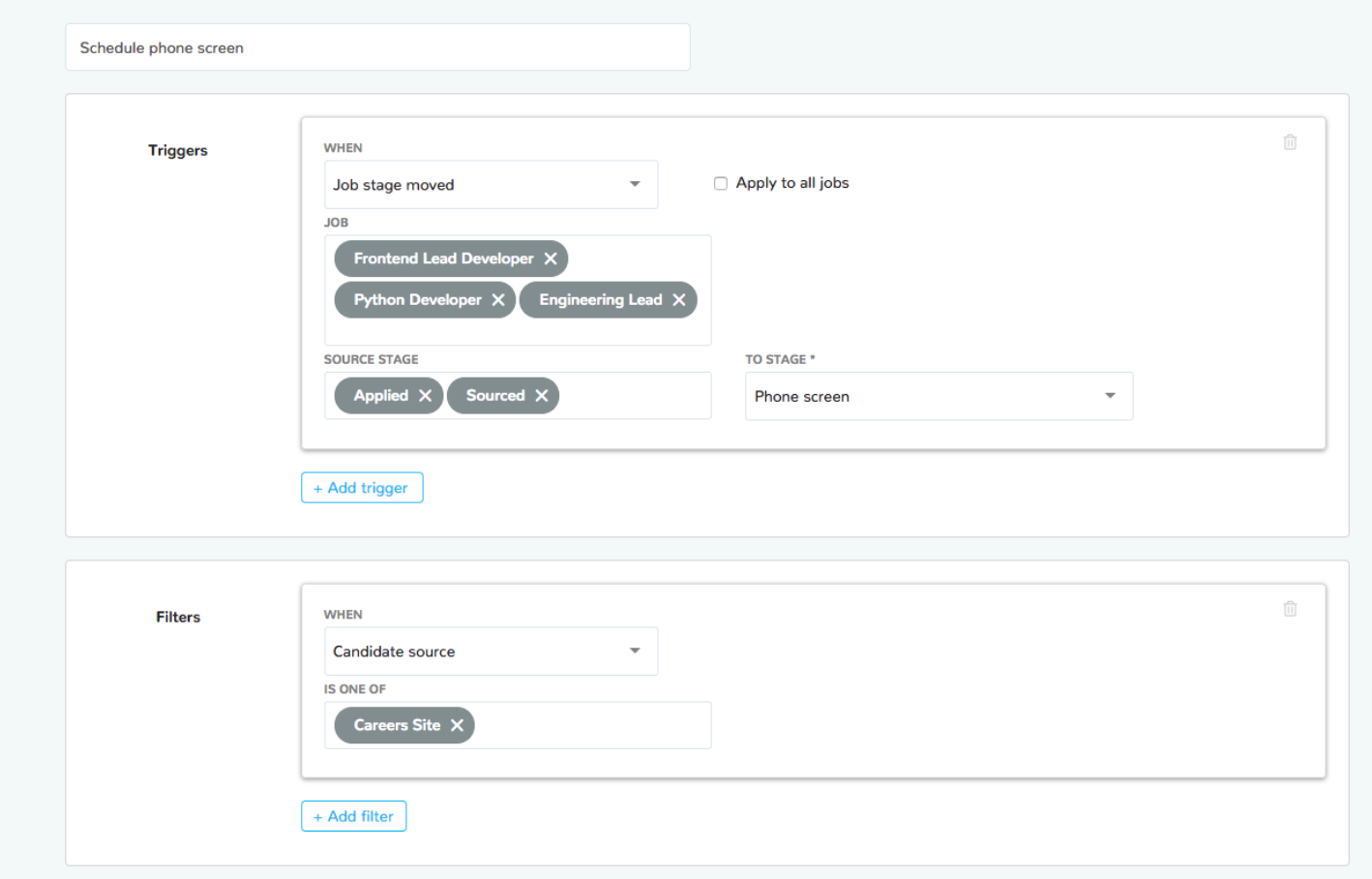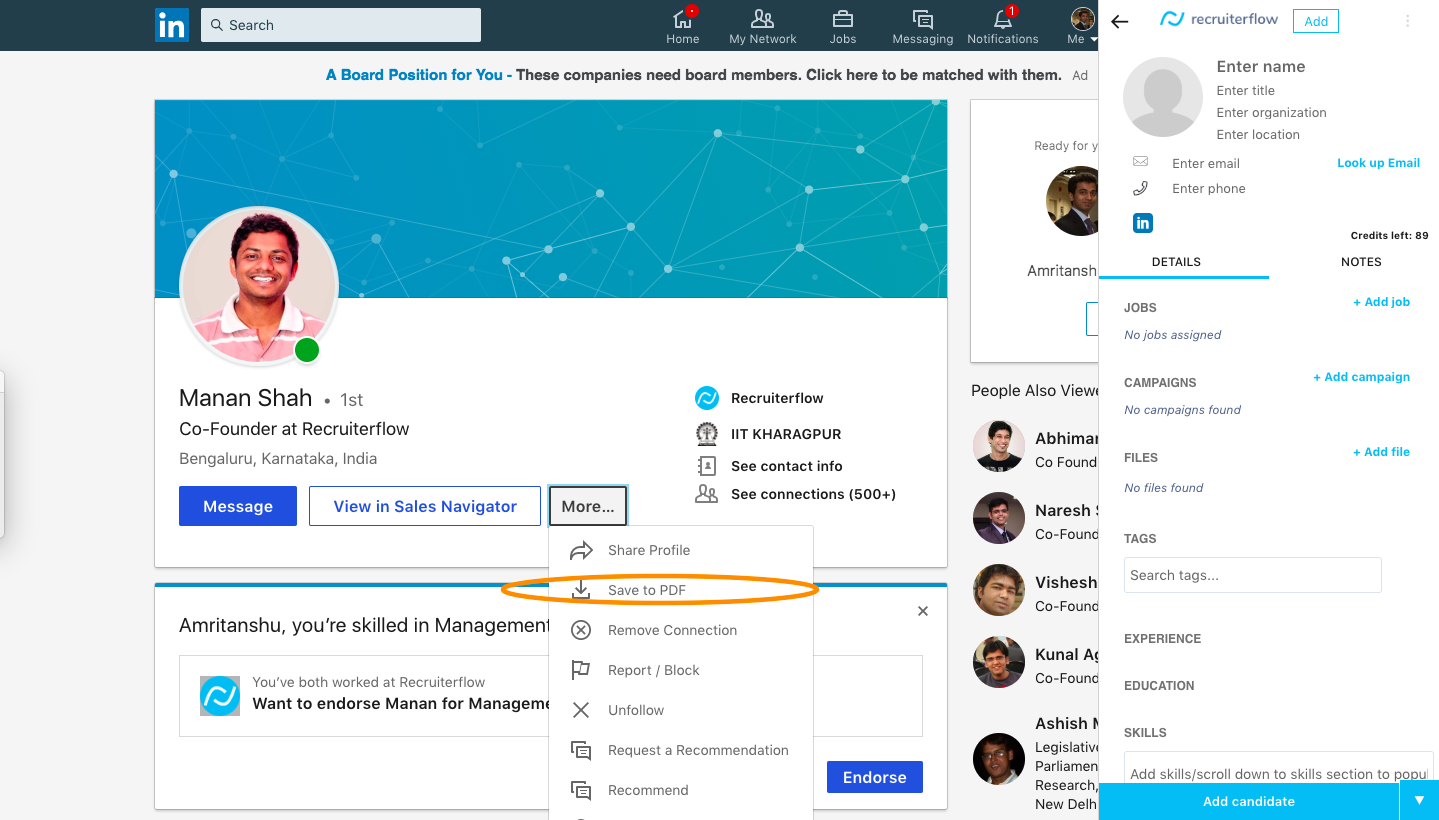
14 Recruitment Strategies to Attract Best Talent in 2025
In today’s day and age where net incomes of staffing businesses are crashing due to an increase in competition. It’s crucial to adopt innovative recruitment strategies to attract the best candidates.
“According to Recruiterflow’s State of Staffing Report, top staffing companies saw a dip in their net incomes by 20% in Q4 2023. This dip is attributed to increasing competition from individual contractors and fractional TAs, the evolution of AI tools, and temporary placements getting precedence.”
We’ve compiled a list of 14 recruitment strategies to stay ahead of the curve and scale your recruiting business.
1. Building a brand presence
A job ad will help you find a suitable candidate for the role. But a brand presence helps you hire the Crème de la crème candidates who might not get on your radar through conventional recruiting methods.
The idea is to build a brand your target candidates recognize and are eager to partner with. And it’s not just candidates with a solid brand presence, you’ll have clients coming to you seeking recruitment services!
Sounds like a plan?
Let’s break down the process of building a brand:
- Start by creating a business account on multiple platforms like LinkedIn and X (previously Twitter). Making a website with well-defined brand messaging, vision, mission, and key offerings.
- Your “about” and “careers” pages on your website should reflect your culture, work ethics, and unique selling points (USPs).
- Design your brand identity with a proper logo, brand color, font, and brand voice. Your audience should be able to recognize your brand anywhere. A strong brand management strategy is crucial for maintaining this consistency across all channels.
- Keep up with the latest content marketing trends and create blog posts, social media content, and newsletters targeting both your target candidates and clients.
- Promote your brand awareness by implementing ad tech technologies like an ad server, a demand-side platform, and a smart ad placement.
You can also check out our blog on creating a strategic recruitment plan, which includes several useful templates.
2. Targeted job ads
More than half of job seekers around the world see job descriptions as a critical factor that influences their decision to apply for a job! So, if you’ve been overlooking the idea of posting a well-crafted job description, it’s time to change that.
First, ditch the same old copy-pasted job descriptions that sound robotic and unappealing. Your target candidates are probably skimming the whole thing.
Go with simple sentences that reflect the essence of your brand and are engaging enough to grab a candidate’s attention.
For example, take a look at Canva’s recruiting strategy and how they write their job descriptions.

They’re clear on what they expect from the role and their content is fun and engaging to read, something that a design enthusiast might take up.
Secondly, make sure to write these job descriptions, keeping inclusivity in mind.
- Avoid giving preference to any gender in your description.
- Never mention a race or ethnicity.
- Include an equal employment statement
- Your description shouldn’t show discrimination of any sort to any party.
Here’s an example of how Canva incorporates inclusivity.

3. Automate redundant tasks
Automating repetitive tasks, like screening resumes, scheduling interviews, and sending follow-up emails, can free up your time. You can focus on more strategic and high-value activities.
There are many benefits of automating your recruitment process. But one standout benefit is that it helps you hire faster and more efficiently.
So, in what ways can you automate your recruiting process?
- Use the applicant tracking system (ATS) to screen resumes automatically.
- Implement an Interview scheduling software that integrates with calendars to automate interview scheduling. It helps reduce back-and-forth communication and save time.
- Sending personalized communications to candidates at various stages of the recruitment process.
- Use job board integrations to automate the posting and distribution of job listings across multiple channels.
- Using recruitment analytics tools to automatically collect and analyze data on recruitment metrics such as time-to-fill, source of hire, and candidate conversion rates.
You can also check out our guide on Recruitment 360 and strategic recruitment plans to enhance your hiring strategy.
How Recruiterflow’s recipes help with automation
Recipes are a simple way to automate certain recruiting tasks and processes based on action-based triggers.

Say you want to automate sending selection emails to all candidates who cleared the last round. You can create a recipe and add triggers to make that happen. Similarly, you can create a recipe for scheduling an email to the candidate who’s been moved to the phone interview stage.
Also check out our blog on the complete guide to the recruiting funnel.
4. Build a talent pipeline
Instead of sourcing candidates only while filling an open role, why not build a talent pipeline that may come in handy when a requirement comes?
It amps up your recruitment strategy in 3 ways:
- You can nurture passive candidates who might not be looking for a change but may convert later.
- You can tap into a wide pool of candidates, including those with exceptional talents and skill sets—something that’s rare to find in a moment of urgency.
- Provocatively reaching out to candidates gives you a competitive edge. This means you’ll beat your competitors in grabbing the best candidates before them!
Build a recruiting database that allows you to quickly source candidates as and when a new requirement comes up. It will be your central store of candidate information, which will save you the time you’d spend sifting through resumes.
You can also check our guide on Inbound Recruiting to learn how to attract top talent effortlessly.
5. Go diverse with your hiring
Diverse recruiting involves keeping your hiring practices free from bias for or against candidates. The aim is to create a workforce that reflects all of society. This includes race, ethnicity, gender, age, disability status, and socioeconomic background.
This helps you contribute toward promoting DE&I, and you also get to tap into a wide spectrum of candidates with unique perspectives and talents.
Here are a few tips to recruit diverse talent:
- Expand your recruiting efforts to reach candidates from underrepresented groups. This may include partnering with diversity-focused job boards and attending career fairs and networking events targeted at minority groups.
- Review job descriptions and revise them to remove biased language and requirements. These may deter diverse candidates from applying. Focus on the essential skills and qualifications needed for the role.
- Make sure interview panels are diverse and inclusive. They should represent many backgrounds, views, and experiences within your organization.
- Use a structured interview process with standardized questions and criteria. This will ensure fairness and consistency for all candidates.
Also, check out our blog on recruiter training to learn how to turn good recruiters into great ones.
6. Keep track of recruiting metrics
The key to succeeding in your recruiting operations business is to stay on top of essential recruiting metrics and KPIs related to your agency’s performance.
Here are a few metrics you can measure:
- Time-to-fill
- Cost-per-hire
- Quality-of-hire
- Revenue-per-recruiter
- Time-to-hire
By tracking these metrics you can make informed decisions based on evidence rather than assumptions. For example, you can track the source of hires check which recruiting channels are most effective, and allocate resources more efficiently.
Moreover, you can allocate your time, budget, and efforts more effectively when you know what’s working and what’s not.
You can also pinpoint bottlenecks or inefficiencies in your recruitment process. For example, if there’s a long time to fill for certain roles, you can investigate potential issues. These might include a lack of qualified candidates or delays in the interview process. Then, you can take corrective actions.
Effective time management is crucial for recruiters juggling multiple candidates and job openings. Implementing time tracking software can provide insights into how time is allocated and identify areas for improvement.
7. Focus on delivering a smooth candidate experience
Candidate experience is how your candidates feel after going through your recruitment process. It starts when they apply and ends when they get onboarded.
While it sounds very doable, most recruiters fail to do the bare minimum, which results in candidates resenting them. In fact about 60% of job seekers from a survey admitted to never hearing from a recruiter within 60 days, while only 7% were notified of not getting the job!
The problem lies in your processes and lack of streamlining!
Here’s how you can build a positive candidate experience:
- Provide clear job descriptions and form an excellent impression – it’ll set the tone right for your future interactions.
- Make the application process easy (not unbearingly long!). Ideally, a candidate should be able to apply and submit their application within 5-8 minutes.
- Automate redundant communication to keep them updated. This includes interview scheduling, updating the status, sending offer letters, and rejection emails, and much more!
- Structure the interview well. Make sure you address all their concerns and questions and ask questions that gauge their skills appropriately.
- A candidate might not be the right fit for a role, but that doesn’t mean you should close the door on them. Connect with them outside of your mailbox. Encourage them to follow your company newsletter and keep them updated on any future openings.
Also, read our blog on the candidate experience survey.
8. Be in sync with the hiring manager
Collaboration is a critical part of the recruitment strategy and helps you closely match the client’s requirements.
Whenever a new hiring requirement comes to you, make sure you have it all laid out clearly for you. You should know the details like:
- Specific skillset they’re looking for in the candidate
- Qualifications and experience the role demands
- Attributes they want in a candidate (eg: soft skills, cultural fit, alignment with company values, etc)
Such close collaboration allows you to quickly address any questions or concerns raised by the hiring manager. It also facilitates faster decision-making and reduces time-to-fill.
Not to mention, you get good quality candidates in your pipeline that fit well your client’s team and company culture. This reduces the risk of mismatches between candidates and employers and potentially leads to lower turnover rates and higher employee retention.
9. Leverage data-driven recruiting
Data-driven recruiting means using data and analytics to inform and improve various aspects of the recruitment process. This recruiting strategy involves collecting and analyzing data related to candidate sourcing, screening, communication, assessment, and other recruitment processes to make more informed and effective recruitment decisions.
What does data-driven recruiting strategy look like?
- Make sure you log everything—candidate/client communication, reviews, touchpoints, etc.
- Use systems and AI recruiting tools that automate the capturing of recruitment data, such as email syncing and integration with other platforms.
- Automate outbound communication and use templates and GPT to craft engaging emails.
- Use scorecards to evaluate candidates at each stage. Base the evaluation on relevant skills, interview results, and qualifications.
- Track the time candidates spend in each recruitment stage. Then, you can find bottlenecks and speed up hiring.
10. Exhaust LinkedIn’s recruiting features
LinkedIn is a goldmine when it comes to sourcing candidates. Imagine how much gold you can extract, when 65M people are searching for jobs on LinkedIn every week! If you feel like you’re not making the optimum use of LinkedIn recruiting, let’s fix that.
How to leverage LinkedIn the right way
- Join groups that are specifically for job seekers, peers, and industry leaders.
- Create a legit company page on LinkedIn and post your jobs there.
- Reach out to passive candidates and build a relationship with them.
- Use boolean search to discover candidate profiles and filter your search using different criteria such as services, location, common connections, etc.
- Create recruiting outreach templates (both for sending connection requests and messaging a connection for the first time). You’ll be surprised how quickly you’re able to make new connections and start new conversations without procrastinating!
How Recruiterflow automates LinkedIn sourcing
Recruiterflow has simplified things for you when it comes to sourcing candidates from LinkedIn without much manual effort.

Just download Recruiterflow’s Chrome extension and configure it to extract profiles from LinkedIn. Download the profile you want to source using the “save as PDF” option. The Chrome extension will automatically pick it up and parse it to upload on your Recruiterflow dashboard.

11. Source candidates from unconventional places
Think out of the box and take every opportunity to find the best talents for your clients. You can explore options like:
- Recruiting events, job fairs, career expos, and networking events where you can connect with your potential candidates face-to-face.
- Seminars, workshops, and professional development events, often attract individuals who are passionate about their field and eager to learn and grow.
- Online forums, social media groups, and professional networking platforms where your target industry or niche gathers to discuss relevant topics. Engage with them, share valuable content, and build relationships.
- Volunteer work or community service initiatives related to your organization’s mission or values.
12. Humanize the hiring process
In the age of AI recruiting, don’t let technology make decisions for you. For example, if you rely completely on your ATS to scan resumes and reject candidates just based on formatting issues, you might miss out on great candidates!
While AI and automation help expedite the hiring process and take care of the redundant tasks for you, don’t let them cloud your judgment. You still need to use your human instincts to build personal connections with candidates and clients.
- Take the time to have meaningful conversations. Listen to candidates’ stories. Understand their motivations and career goals.
- Keep candidates informed about their application’s status. Give them constructive feedback and address their concerns.
- Create a supportive and inclusive hiring environment where candidates feel valued and respected.
- Avoid rigidly sticking to set criteria or stereotypes. Instead, focus on assessing candidates based on their strengths and potential.
13. Be innovative with your interview strategy
When recruitment is evolving rapidly, it’s time to rethink your traditional interview approach! Instead of going with the same old ‘dull’ interview formats and repeated questions, come up with fresh ideas to assess the candidates.
Here are some recruiting tips:
- Create simulation exercises that mimic real-life scenarios candidates would encounter in the role. For example, when hiring for a digital marketing specialist role, you can ask the candidate to develop a social media campaign for a fictional client launching a new fitness app.
- Use role-playing scenarios to assess how a candidate handles challenging situations. For example, you can ask a candidate to role-play a customer interaction or a sales pitch.
- Invite candidates to present a project or portfolio of their work during the interview process.
- Assemble cross-functional interview panels with team members from different departments or functions to offer candidates exposure to various perspectives.
You can also check out our guide on the best recruitment marketing tools.
14. Implement skill-based hiring
Skill-based hiring involves prioritizing candidates’ skills and abilities over traditional factors such as education or job titles.
It helps you assess a candidate’s suitability for a role more accurately and opens doors to diverse candidates.
Pre-employment tests are a great way to fairly assess a candidate’s skills. They ensure there are no biases, conscious or unconscious. Ideally, these assessments replace resume screening and happen before the first round of interviews.
Hire the best talents with these recruitment strategies
As we look to the future of recruiting, it’s clear that recruitment is never going to be the same as it was a few decades ago! This is why you need to adopt recruitment strategies that prioritize adaptability, innovation, and speed.
That’s where ATS like Recruiterflow helps you in executing these recruiting strategies. From automated resume parsing and candidate sourcing to customizable workflows and collaborative hiring tools, Recruiterflow helps you manage every aspect of the recruitment lifecycle.
Book your demo today!


